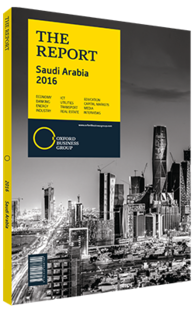Saudi Arabia moves to extend its downstream industrial reach
Steps taken by national oil giant Saudi Aramco to consolidate some of its downstream assets, most notably in the US market, appear to be laying the groundwork for an initial public offering (IPO) and a move towards becoming a global refining leader. In mid-March 2016 Royal Dutch Shell’s US affiliate and Saudi Aramco’s downstream subsidiary Saudi Refining announced an end to their partnership and the division of assets of their joint venture (JV) Motiva Enterprises.
Downstream
Under the agreement, Saudi Aramco will retain control of the JV’s 600,000-barrel-per-day (bpd) refinery in Port Arthur, Texas and 26 distribution terminals. The deal will allow Saudi Aramco to choose the refinery’s feedstock, meaning the firm could expand its market share in the US by opting to process only Saudi crude. In addition to keeping the Motiva name, Saudi Aramco will have exclusive licence to use the Shell brand for petrol and diesel sales in parts of Texas, most of the Mississippi Valley and markets in the south-east and mid-Atlantic regions. “The Port Arthur refinery will advance Saudi Aramco’s global downstream integration strategy through supply and trading, refining and fuels marketing, chemicals and base oils,” Abdulrahman Al Wuhaib, senior vice-president of downstream operations at Saudi Aramco, said in a company release.
Already the world’s largest producer of crude oil, Saudi Aramco is positioning itself to become the largest refiner, overtaking US-based ExxonMobil, largely by expanding its capacity in Asia and its petrochemical operations, according to a media interview by Deputy Crown Prince Mohammed bin Salman Al Saud in early April. With its market share in the global crude market under pressure from US shale production and rising output from Iran, Saudi Arabia could reap benefits by becoming a stronger downstream player.
China Gambit
At the same time that Saudi Aramco is consolidating its operations in the US market, the company is also keeping China firmly in its sights. Already providing 20% of China’s crude oil imports, Saudi Aramco is pursuing opportunities to develop its in-country downstream capacity in cooperation with Chinese companies. According to Amin Nasser, president and CEO of Saudi Aramco, China offers scope for future downstream expansion. “Our investments in China’s entire oil value chain – integrating supply, refining, chemicals, lubes, distribution and marketing – don’t match our supply,” he said during an address to the China Development Forum in January 2016. “Bridging this disparity will yield better efficiencies, innovation and environmental protection.” Saudi Aramco has long been in discussions to build a 260,000-bpd refinery in the Yunnan province. In January 2016 the firm announced it was in advanced talks with China National Petroleum Corporation and Sinopec on several projects, including refinery projects in the Shandong and Sichuan provinces. This followed the inauguration of Yanbu Aramco Sinopec Refining, a refining JV between Saudi Aramco and Sinopec on the Red Sea coast of Saudi Arabia with a 400,000-bpd capacity. Elsewhere in Asia, Saudi Aramco is mulling increasing its downstream capacity in Malaysia, Vietnam, India and Indonesia, according to Nasser.
Possible Float
After Saudi officials announced in early 2016 that Saudi Aramco was considering floating shares on the Saudi Stock Exchange, media had speculated that the firm could either offer shares in its lucrative upstream assets or bundle its downstream services, which have a market value of between $100bn and $150bn, according to John Sfakianakis, then-director of the GCC region at UK-based investment manager Ashmore Group. A report by US-based investment firm State Street Global Advisors said that there is no urgency for Saudi Aramco to sell off its assets over the next five years. Other options available to the government include issuing debt, further reducing expenditures on oil subsidies and drawing on the Kingdom’s extensive savings.
You have reached the limit of premium articles you can view for free.
Choose from the options below to purchase print or digital editions of our Reports. You can also purchase a website subscription giving you unlimited access to all of our Reports online for 12 months.
If you have already purchased this Report or have a website subscription, please login to continue.

